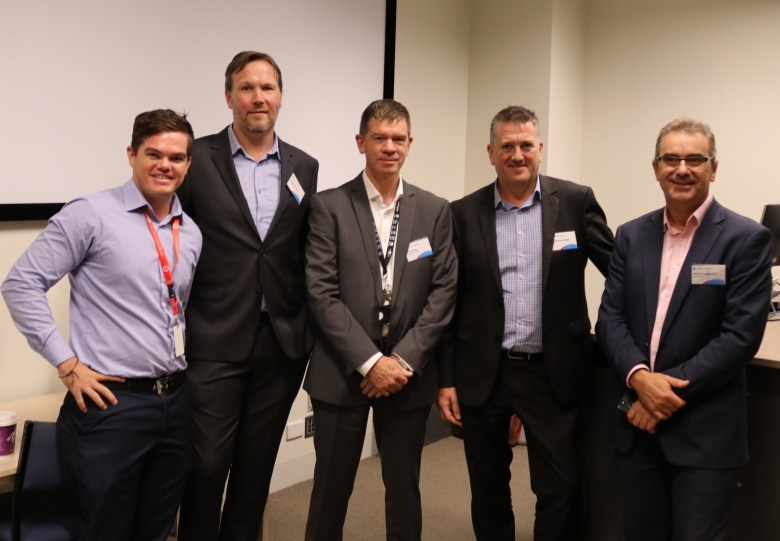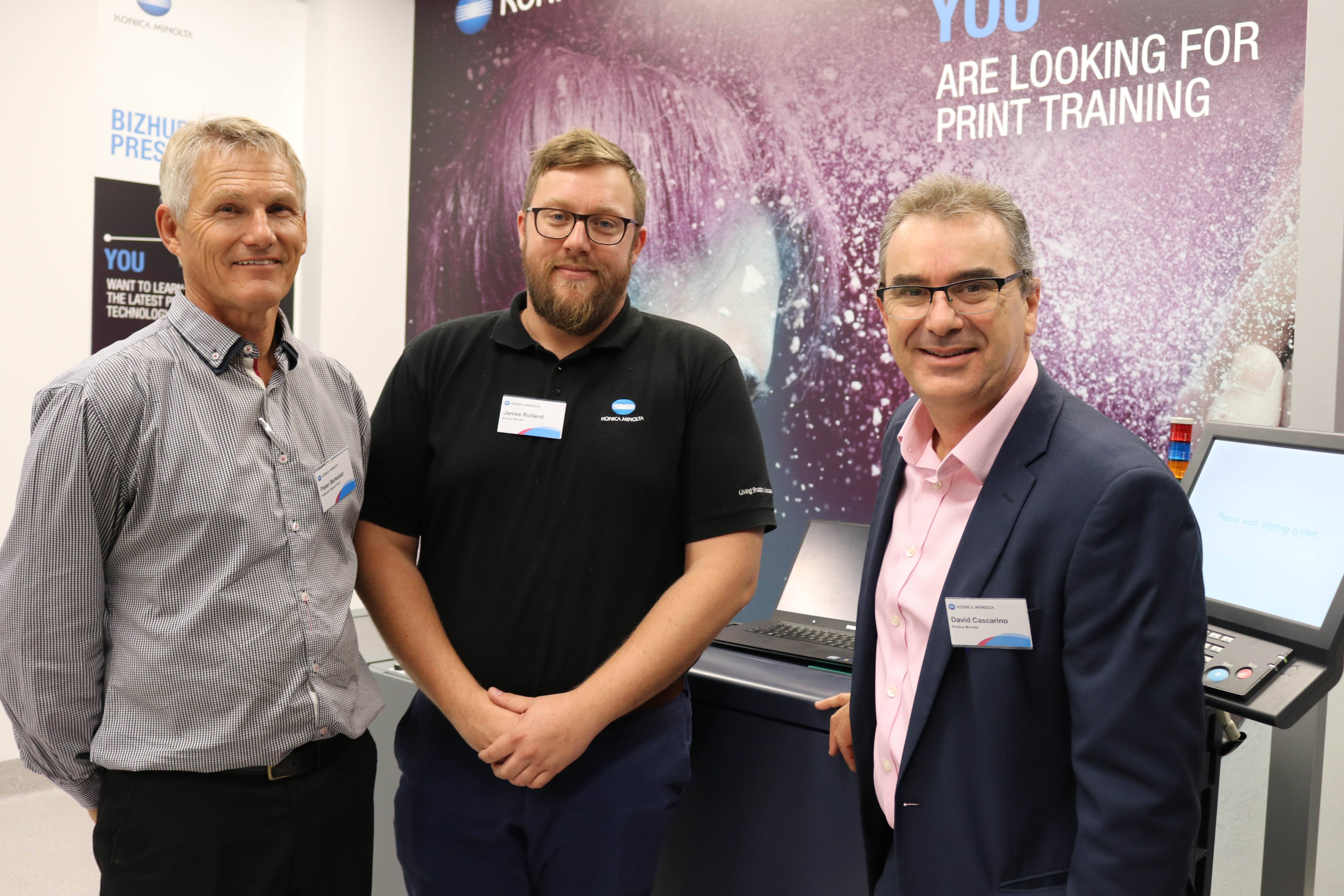
Konica Minolta, in conjunction with software providers XMPie and PrintIQ, showcased the advantages of printing variable labels on the AccurioLabel 190 digital press at an event at Victoria’s Holmesglen Institute, the premier location for printing training in the state.
The well attended event featured a demonstration of the AccurioLabel 190 and a ADSI Centra finisher from QLM and included a presentation about the educational prospects for apprentices and those seeking to upskill from Holmesglen print education manager Paul Ross.
The group also got the lowdown on how front end software provider XMPie, which stands for Cross Media Personalisation in E Business, can work with the backend technical prowess of PrintIQ to generate efficiencies, make estimating easier, cut waste and ensure a more streamlined print process.
As was shown at the event, put together these parts create an easy to use solution for short to medium run digital label production opening up doors to new revenue streams and parallel use with existing analogue label printers.
Konica Minolta national manager industrial print David Cascarino outlined the benefits of the AccurioLabel 190 for quality short run and variable digital label printing and said since its 2016 drupa release it had certainly found its niche with 300 units sold worldwide and 10 in Australia.
“It’s obviously filling a niche out there in the marketplace for us and the reason it does this is because of the wide range of applications and industries that it can cater for, whether it be labels for the liquor and beverage industries, industrial products, medicines, because we have got FDA compliance,” Cascarino said, adding the machine has a Accurio190 a huge scope.
“Within those industries the short run labels that would appear and be existent within those industries feeds our press beautifully.”

Cascarino said the AccurioLabel 190’s 1200x1200dpi means image quality is equal to Konica Minolta’s sheetfed presses, with the machine supporting a 330mm web at a print rate of 18.8m/minute. Due to the use of dry toner and dry ink no precoating is required with the machine using a small footprint with the ability to print on a wide range of stocks.
“It’s fit in our market position is a really nice fit for its speed, its quality and what it produces and that also matches up with cost performance,” Cascarino said.
“We not here to talk about whether or not a digital process is going to take away from flexo but they always complementary because they have different places in the positioning of digital.”
XMPIE Asia Pacific sales manager Enda Kavanagh said being able to print variable data on labels, like the Vegemite and Nutella campaigns, means product can sell for substantially more due to its emotional content and connection to the customer.
“We’ve seen this before in Australia. All of a sudden the personalised package is worth 40 per cent extra. We’ve seen the Vegemite, we’ve seen the Nutella. If a jar of Nutella is $6 adding a label to it I can sell it for $12 and $13. So there is significant emotional content that can be created by the label if you make it available to the person,” Kavanagh said.
“It’s all out there, it’s all capable and and it’s all digital but how much can you sell it for is the question. You can sell it for a significant amount if you get the story right.
“And that’s where we see the future revenue streams in adding value to creating the content in the digital.”
Adrian Fleming, global sales director at PrintIQ, took the audience through the PrintIQ process which included a feature which shows which print device will give the best margin, when ink and paper stock is taken into account and the huge benefits this can have for print cost estimating.
Joseph Brown, a sales executive with QLM, took the attendees through a run process of how the ADSI Centra finisher cuts the final product in an easy manner with the job being able to be done by an operator with minimal training.
Ross covered the array of courses available in printing at Holmesgen, including the TAFE-based apprenticeship which re-started in 2016 at the institute after it was abandoned in 2012 at RMIT, where it was previously taught.
The printing education centre at Holmesglen has since been branded under the Konica Minolta banner, with the tech company supplying all manner of equipment to assist with the teaching of students.
Ross said the program serviced the entire industry, not just digital, and takes all comers from across the state and also Tasmania.
It is also running a 12 week certificate I course in printing for free since the Victorian government ruled last year that the industry was in a skills shortage in the state.
“We’ve had a very large take up of people wanting to do that course, we’ve currently got 17 people in one group and 25 waiting to do the second course that’s starting in May. It’s a free course and is at no cost for the student. They come here for four days each week and we try to place them one day a week for work experience with companies that would like to try out a potential apprentice or an employee and that can lead on to a full time employment opportunity for them," Ross told the gathering.
“We train right across the state and we also put our hand up to the provider of training in Tasmania.”
Comment below to have your say on this story.
If you have a news story or tip-off, get in touch at editorial@sprinter.com.au.
Sign up to the Sprinter newsletter
